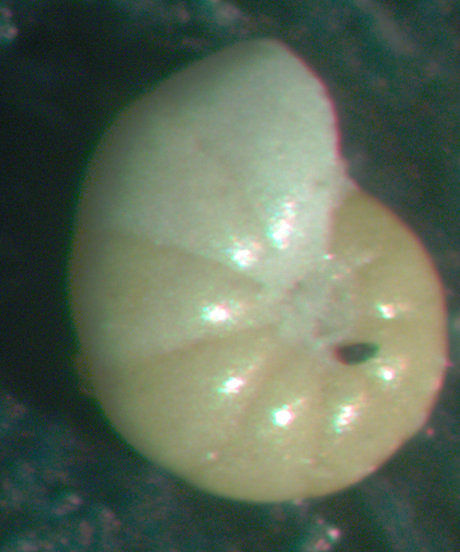
Onward to the Second Site and Finding Forams
The first forams!!?
Once all of the commotion died down, the paleontologists went off with their samples, washing the sediments or making smear slides (smear slides are made by taking a little bit of sediments and smearing them thinly onto a slide) and then looking through microscopes looking for the tiny little shells made by microscopic organisms.
Epilogue: An early ending to this most promising site
Unfortunately, after about 30 meters or so of drilling, with continuous turbidite deposits, it was decided to stop and go to an even deeper water site located about 90 miles or about 8 hours away. The drillers did an amazing job pulling the drilling pipe and we onto the next location within about 12 hours.
Onto the second site!!
This alternate site is deeper than the first and so should be further away from the turbidite deposits. Our first core showed great promise as it consisted of muds, with no gravels or sands. Coring went quickly at first, recovering over 450 feet per day of core. As for my research, this site is located in extremely deep water. Coupled with the cold bottom water temperatures and high carbon dioxide content, the bottom waters are usually quite corrosive to calcite. This would result in dissolving the shells of the microfossil I am looking for, the foramininfers. I had anticipated this and did not request samples for this upper part of the core.

A reworked foram, probably transported from shallower water depths by a turbidity current down the slope.

Some more reworked forams

A Pyrulina. Isn’t it cute?
During my sifting through the sediments, I found some just lovely looking diatoms.

This diatom is called arachnoidiscus spp. Pretty amazing, for a diatom.
However, I am hopeful that as we get into older material, the bottom waters during this time were warmer and the crust was higher. This would result in the preservation of the foraminiferal shells. I am hopeful and working my little fingers to the bone washing away to get to the older sediments.
As it is my birthday today, I am hoping that my b-day present will be some well preserved foraminifers!!!!
Late Update:
Well, it took long enough but somewhere in the early Miocene (around 20-22 million years ago), after looking at about 60 samples, I have begun having sufficient forams to say I have an assemblage (>50 specimens). They are agglutinated specimens, but they do provide important information about the water mass that bathed this location back then. I actually did not expect to see any forams until the Oligocene (>23 million years), so this is a most welcome birthday present!!!
More soon as well as pictures.